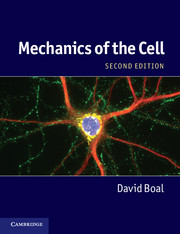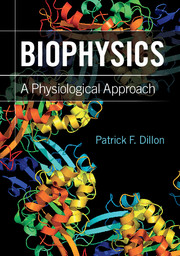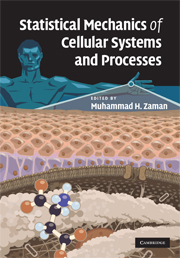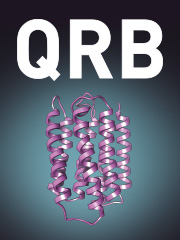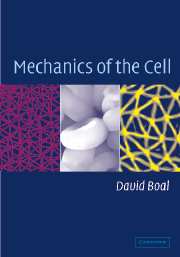Mechanics of the Cell
Exploring the mechanical features of biological cells, including their architecture and stability, this textbook is a pedagogical introduction to the interdisciplinary fields of cell mechanics and soft matter physics from both experimental and theoretical perspectives. This second edition has been greatly updated and expanded, with new chapters on complex filaments, the cell division cycle, the mechanisms of control and organization in the cell, and fluctuation phenomena. The textbook is now in full color which enhances the diagrams and allows the inclusion of new microscopy images. With around 280 end-of-chapter exercises exploring further applications, this textbook is ideal for advanced undergraduate and graduate students in physics and biomedical engineering. A website hosted by the author contains extra support material, diagrams and lecture notes, and is available at www.cambridge.org/Boal.
- Now in full color with new chapters on complex filaments, the cell division cycle, the mechanisms of control and organization in the cell, and fluctuation phenomena
- Features around 280 end-of-chapter exercises exploring further applications and online resources include extra support material, diagrams and lecture notes
- Covers a range of topics around the mechanical properties of the cell, mixing theory and experiment and emphasizing physics concepts
Reviews & endorsements
Reviews of the first edition: 'In Mechanics of the Cell David Boal explains the mechanical properties of the biopolymers found within cells … for graduate students in the general field and for biotechnologists required to consider added dimensions to their work it represents a comprehensive text that ought to make it a standard reference for many years.' Ian Jones, Chemistry in Britain
'If we were really honest with ourselves, most of us would have to admit that we often take the humble biological cell for granted … David Boal describes the architecture of the biological cell's internal and external structure in extensive detail … This book is highly detailed; by virtue of the incredibly complex mechanics underlying the specialised properties of biological cells, it needs to be!' Kevin Coward, Biologist
'This book is by a physicist attempting to get across the underlying physical principles behind biological structures … a very useful text, which fills a hole in the literature, and will serve as a useful reference for a number of years to come.' John Seddon, Chemistry Industry
Product details
January 2012Paperback
9780521130691
622 pages
246 × 190 × 25 mm
1.34kg
282 colour illus. 283 exercises
Available
Table of Contents
- Preface
- List of symbols
- 1. Introduction to the cell
- 2. Soft materials and fluids
- Part I. Rods and Ropes:
- 3. Polymers
- 4. Complex filaments
- 5. Two-dimensional networks
- 6. Three-dimensional networks
- Part II. Membranes:
- 7. Biomembranes
- 8. Membrane undulations
- 9. Intermembrane and electrostatic forces
- Part III. The Whole Cell:
- 10. Structure of the simplest cells
- 11. Dynamic filaments
- 12. Growth and division
- 13. Signals and switches
- Appendixes
- Glossary
- References
- Index.

